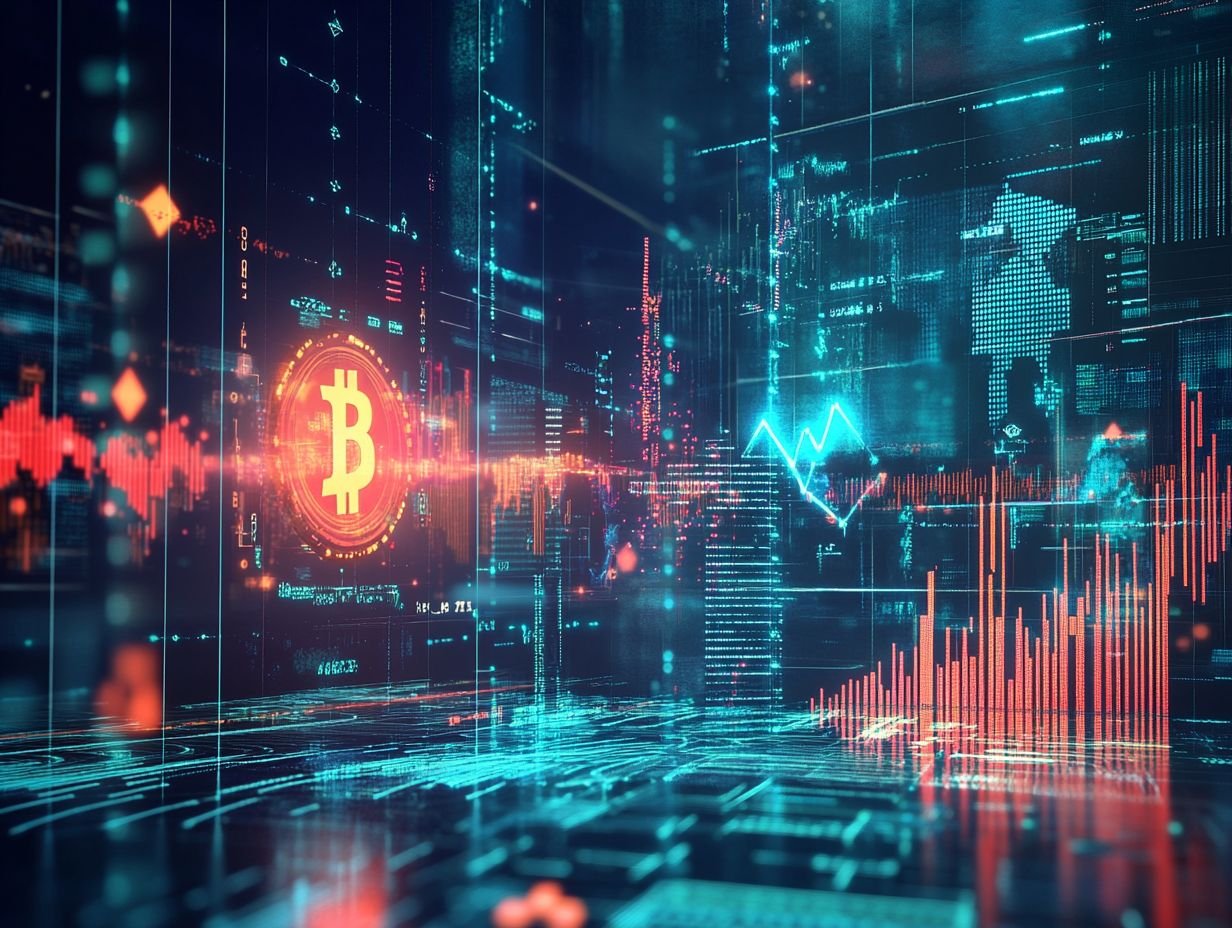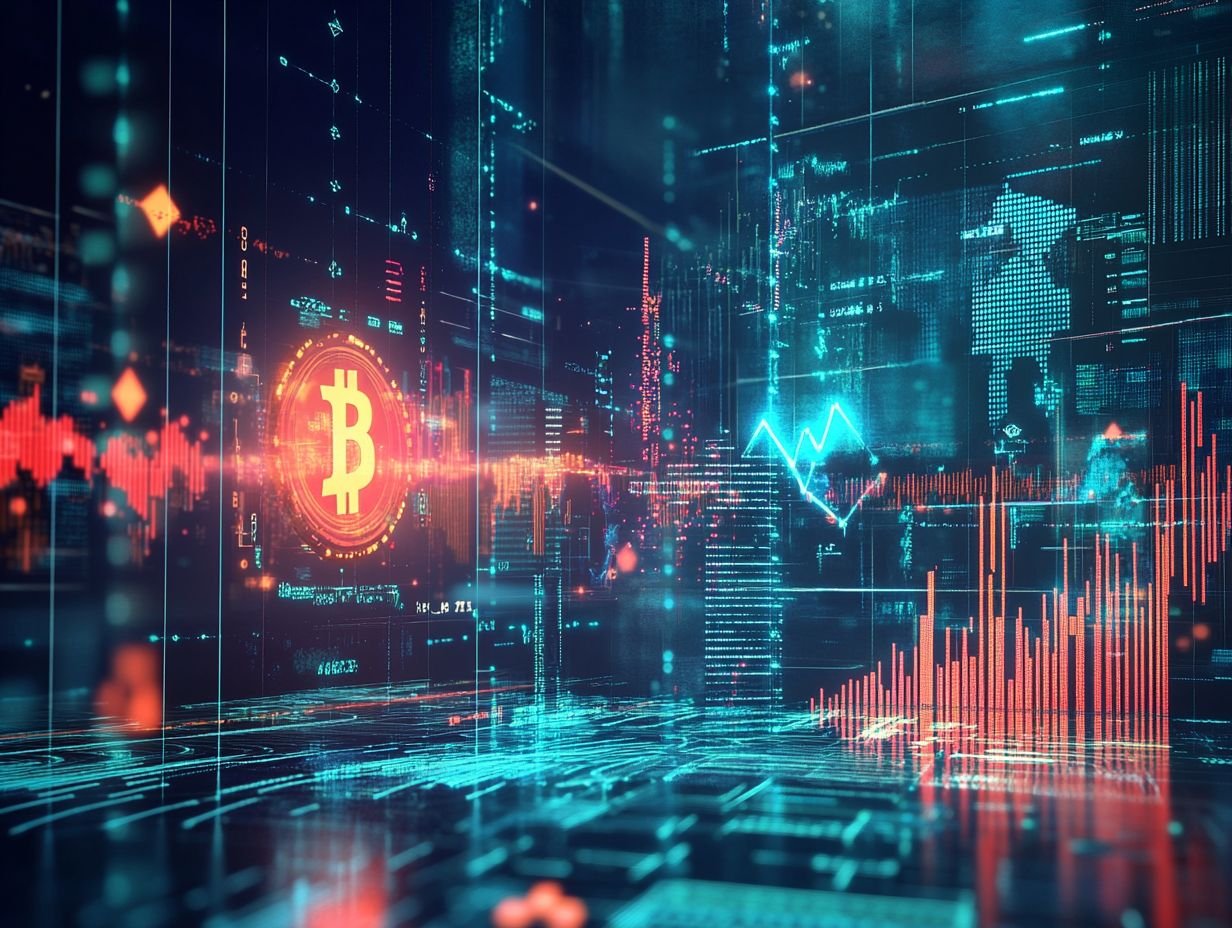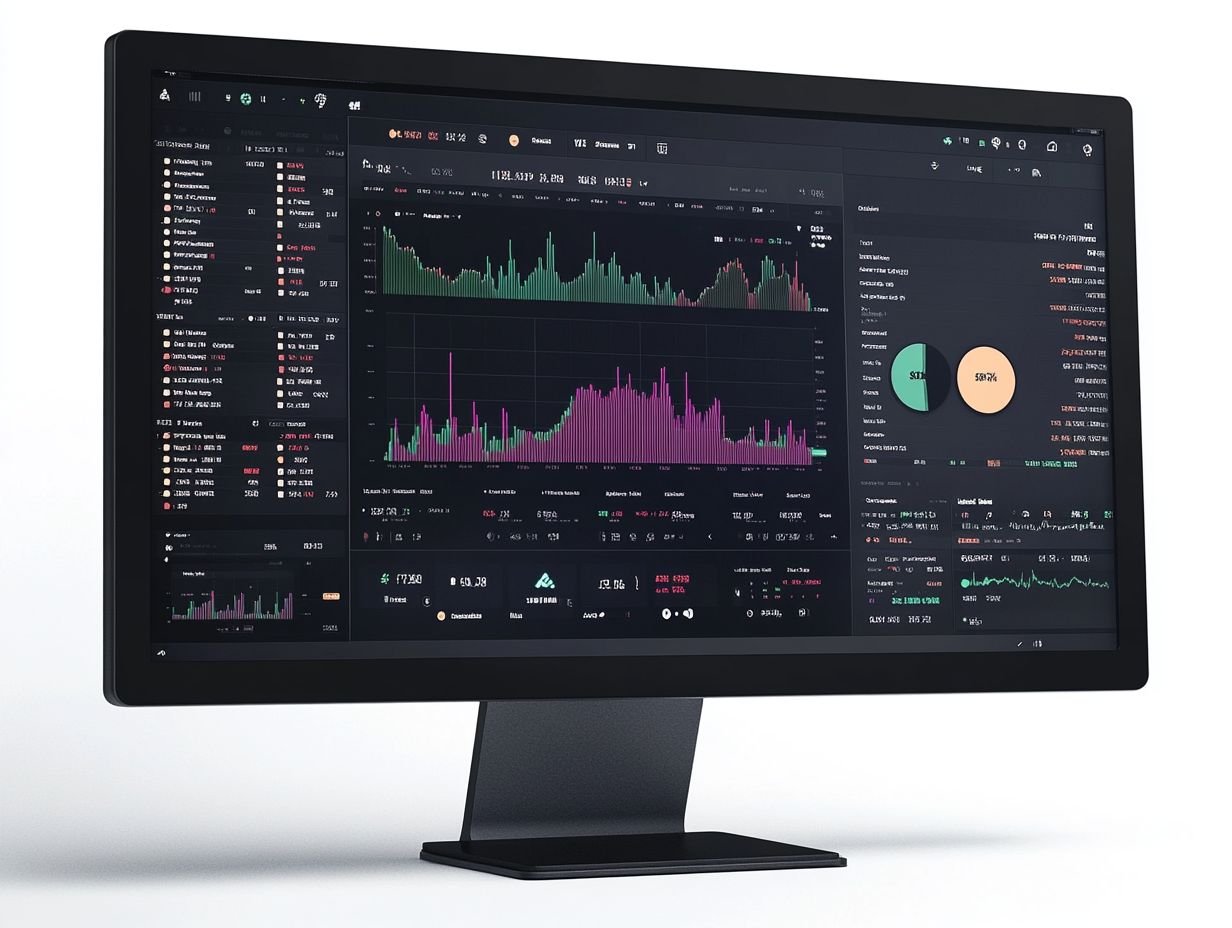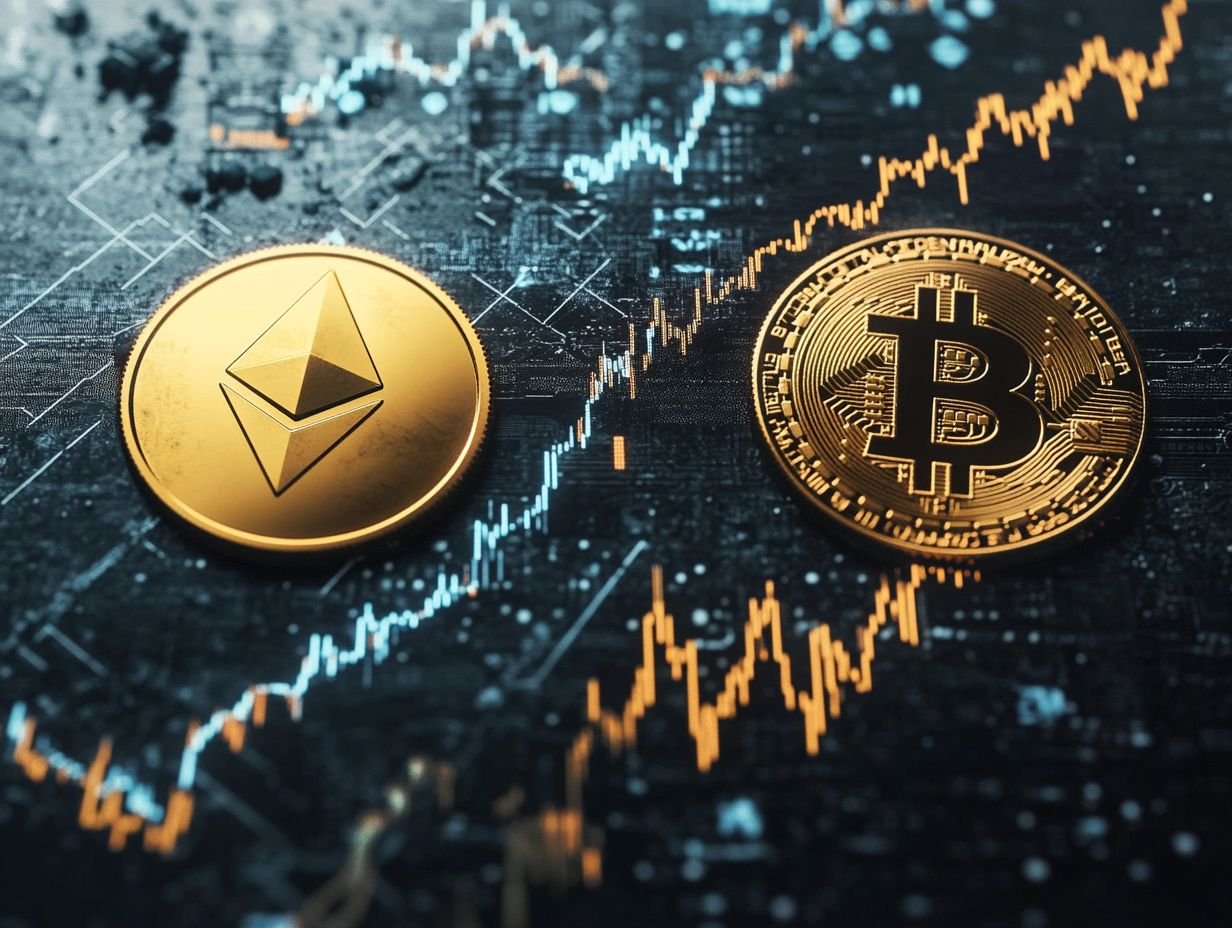The FTX Exchange, alongside Alameda Research, once stood as a titan in the cryptocurrency world, capturing attention with its rapid growth and innovative offerings, including crypto tokens and altcoins.
The dramatic collapse of the platform, influenced by market cap fluctuations and scams, has left many investors questioning its safety and future amid the volatile crypto market.
This article explores the rise and fall of FTX, the legal and financial fallout, including legal issues such as securities fraud and class action lawsuits, and the current landscape for investors considering FTT and other digital assets.
Is it safe to consider FTX again in 2024 amid ongoing bankruptcy proceedings and regulatory challenges? Join us as we navigate these crucial questions.
Key Takeaways:
.jpg_00.jpeg)
What is FTX?
FTX stands as a prominent cryptocurrency trading platform, offering a comprehensive suite of services for the acquisition, sale, and management of digital currency assets. This includes advanced trading options tailored for seasoned investors.
With features such as spot trading, futures contracts, and options trading, users are given the power to employ various strategies, thereby maximising their investment potential. The platform supports a wide array of digital currencies, encompassing well-known options like Bitcoin and Ethereum, alongside an extensive selection of altcoins, ensuring that investors have diverse choices at their disposal. For a detailed analysis of the safety of investments post-FTX, check out this FTX Exchange Review: Is It Still Safe for Crypto Investors?.
“`html
FTX distinguishes itself through unique offerings, such as tokenised stocks and innovative derivatives, providing a competitive edge over more traditional exchanges. Its user-friendly interface, coupled with robust liquidity, positions FTX as an appealing choice for both novices and experienced traders alike, eager to navigate the ever-evolving landscape of cryptocurrency. For more insights, check out the FTX Exchange Review: Is It Still Safe for Crypto Investors?
“`
The Rise and Fall of FTX
The narrative of FTX unfolds as a striking tale of extraordinary rise and subsequent fall, with its founder, Sam Bankman-Fried, and entities like Alameda Research, emerging as significant figures within the cryptocurrency sphere.
His journey encapsulates both the immense potential and inherent risks associated with crypto trading, serving as a cautionary example for investors globally.
Initial Growth and Market Position
In its formative years, FTX swiftly ascended to a prominent position in the cryptocurrency market, distinguished by its innovative trading features and substantial trading volumes across a diverse array of cryptocurrencies.
This rapid emergence can be attributed to a well-calibrated mix of strategic product offerings, including perpetual futures and advanced options, which resonated with both retail and institutional traders. By introducing functionalities often lacking in traditional exchanges, FTX set itself apart from established competitors like Binance.
The platform’s unwavering commitment to enhancing user experience, coupled with competitive trading fees, enabled it to secure a significant share of the market.
Moreover, FTX’s aggressive marketing strategies, encompassing partnerships with high-profile athletes and sponsorships in the sports arena, bolstered its visibility in an increasingly crowded marketplace. This approach fostered a community of dedicated users who reaped the benefits of mentorship and educational resources, further solidifying the platform’s standing in the industry.
What Happened with FTX?
FTX’s dramatic collapse can be traced back to a series of mismanagement decisions that culminated in liquidity crises, bankruptcy filings, and serious allegations of fraud against its leadership, notably founder Sam Bankman-Fried and connections with entities like Alameda Research.
The rapid deterioration of the exchange began when it failed to adequately safeguard customer funds, which fuelled investor distrust and triggered a wave of mass withdrawals. As the funds were drained, it became evident that FTX lacked the necessary liquidity to fulfil its obligations, leading to a frantic scramble for financial stability.
This turmoil drew the attention of regulators, resulting in extensive legal battles that only exacerbated FTX’s already precarious situation. Ultimately, the cumulative impact of these pivotal events unravelled what was once heralded as a shining star in the cryptocurrency landscape, casting a stark light on the potential risks associated with poor governance and excessive leverage in the realm of digital finance.
Factors Leading to the Collapse
.jpg_01.jpeg)
The collapse of FTX was shaped by a confluence of factors, including insufficient financial controls, inadequate regulatory oversight, and severe liquidity challenges that rendered the platform incapable of addressing withdrawal demands.
These elements combined to create a perfect storm, culminating in a catastrophic failure. The absence of stringent financial measures allowed potential fraud to thrive, eroding investor trust significantly. Adding to this turmoil was the lack of regulatory compliance, which left investors vulnerable and exposed to unforeseen risks. As liquidity dwindled, concerns escalated, making it increasingly difficult for the platform to meet its obligations.
These failures underscored the urgent need for robust financial practices and effective oversight to avert similar crises in the future.
Legal and Financial Repercussions
The legal and financial ramifications arising from the FTX collapse are extensive and multifaceted. Key executives face criminal charges, while the company navigates complex insolvency proceedings.
Additionally, a wave of group litigation has emerged, with investors pursuing compensation amidst the turmoil.
Criminal Charges and Lawsuits
Following the collapse of FTX, several criminal charges have been brought against Sam Bankman-Fried and other executives, alleging securities fraud and mismanagement of investor funds.
These charges reveal a disturbing pattern of alleged deceit that may involve the misallocation of billions of pounds, eroding the trust of investors who once believed in the company’s viability and integrity. The legal proceedings represent a critical juncture not only for the leadership but also for the cryptocurrency sector, potentially setting important precedents for the prosecution of financial fraud.
As investigations unfold, the implications for the company’s future appear increasingly dire, leaving investors to grapple with the uncertainty surrounding the safety of their investments amidst the turmoil. The escalation of legal actions conveys a powerful message about accountability, illuminating the pressing need for reforms within the industry.
FTX Debtors’ Report
The FTX debtors’ report unveils crucial insights into the financial condition of the exchange amid its bankruptcy proceedings, shedding light on the magnitude of losses suffered and the anticipated route to recovery in the context of macroeconomic conditions and financial oversight.
The findings reveal staggering total liabilities, reaching into the billions, which accentuates the profound financial turmoil confronting the platform. The report indicates that creditors may encounter prolonged waiting periods as the restructuring process progresses, accompanied by projections designed to elucidate potential timelines for asset recovery.
With a thorough evaluation of outstanding debts and liquidation strategies in place, it becomes evident that the debtors are navigating a complex landscape replete with both challenges and opportunities for eventual restitution. Stakeholders are encouraged to remain vigilant as these developments significantly influence the future dynamics of the cryptocurrency marketplace.
Current Status of FTX Exchange
The current status of FTX remains shrouded in uncertainty, with ongoing deliberations regarding customer repayment plans and the potential relaunch as a competitive decentralized exchange in the cryptocurrency market.
Plans for Customer Repayment
.jpg_10.jpeg)
The plans for customer repayment following FTX’s bankruptcy play a pivotal role in restoring investor confidence, as stakeholders keenly anticipate the outcomes of ongoing negotiations regarding cash distributions and collateral recovery.
The proposed repayment strategies aim to address the substantial financial losses experienced by numerous users and investors, underscoring a commitment to accountability and transparency amid such turmoil. However, challenges remain, including the complex task of asset valuation and the equitable distribution of funds among affected parties.
Investors are closely observing these developments, understanding that a well-structured plan could not only protect their interests but also bolster the overall stability of the cryptocurrency market. Responses from various stakeholders reveal a blend of optimism and scepticism, highlighting the necessity for robust strategies that prioritise customer recovery and cultivate trust as they move forward. Entities like Binance and Alameda Research, which are major players in the crypto market, also share these concerns.
Will FTX Relaunch in the Future?
The prospects of FTX relaunching in the future remain a topic of speculation, intricately tied to its financial recovery, adherence to regulatory standards, and the prevailing sentiment within the cryptocurrency community. Furthermore, the involvement of Sam Bankman-Fried and the handling of FTT tokens could significantly influence this process.
Enthusiasts and investors are meticulously observing the shifting landscape, understanding that for FTX to reclaim its position in the market, it must confront its previous shortcomings and rebuild trust with its stakeholders. The fallout from the platform’s bankruptcy proceedings and the collapse of its liquidity could serve as critical lessons for its revival.
Recent advancements in regulatory frameworks across various jurisdictions could either act as a springboard for FTX’s reintegration or pose additional challenges. Stakeholders are particularly keen to learn how the exchange intends to bolster the security and transparency of its trading platform—elements critical for reassuring potential users. Additionally, comparisons with other exchanges like WazirX and Voyager Digital may offer insights into the best practices for compliance and transparency.
As the cryptocurrency market continues to experience volatility, it will be imperative for FTX to devise a robust strategy for its future operations. This includes compliance with emerging regulations and maintaining a competitive edge to realise its revival aspirations. Comparison with other notable platforms like BlockFi and Celsius Network could be valuable. For more insights, you can read the FTX Exchange Review: Is It Still Safe for Crypto Investors?.
Safety for Crypto Investors
Evaluating the safety of FTX for cryptocurrency investors necessitates a thorough examination of its risk management strategies, security protocols, and the platform’s overall stability, particularly in the context of its historical challenges and the prevailing regulatory landscape. Additionally, the role of key figures such as Sam Bankman-Fried in navigating these challenges cannot be overlooked.
Is It Safe to Invest in FTX Now?
Determining the safety of investing in FTX necessitates a comprehensive risk assessment of the platform’s current operations alongside the regulatory landscape that encompasses cryptocurrency exchanges. This includes evaluating its financial controls and the efficacy of its governance structures.
Investors must meticulously scrutinise FTX’s recent performance amid fluctuating market conditions, as these can profoundly influence the overall safety of their investments. This scrutiny includes understanding how FTX compares with other exchanges such as Binance and Robinhood. The mounting scrutiny from regulatory bodies is likely to impact the exchange’s operational practices and compliance measures.
Assessing how effectively FTX adapts to these challenges, in conjunction with persistent market volatility, is essential for making well-informed investment decisions. Ultimately, grasping the intricate relationship between regulatory frameworks and investment risk will prove vital in evaluating whether FTX remains a viable option for cautious investors seeking to navigate the ever-evolving cryptocurrency landscape. Furthermore, understanding the role of macroeconomic conditions and how they influence the crypto market is equally critical.
Risk Assessment and Security Measures
Conducting a thorough risk assessment of FTX’s security measures is crucial for investors seeking to comprehend the protective frameworks established for their digital assets. By meticulously evaluating these security protocols, prospective investors can glean valuable insights into how their investments are shielded from various threats and vulnerabilities. Additionally, comparisons with the security measures of exchanges like Mudrex could provide deeper insights.
“`html
FTX has adopted a multi-layered security strategy that encompasses robust encryption, cold storage solutions, and regular security audits, all aimed at minimising the risks associated with digital asset management. These measures are designed not only to ensure investor protection but also to cultivate confidence in the platform’s capacity to manage sensitive information effectively. Moreover, the involvement of reputable entities like Alibaba in technology development further bolsters trust. For more insights, check out this FTX Exchange Review: Is It Still Safe for Crypto Investors?.
“`
Moreover, ongoing monitoring and prompt response procedures are in place to address any identified weaknesses, thereby enhancing the overall security landscape. Understanding these critical components equips investors with the knowledge necessary to make informed decisions in the rapidly evolving cryptocurrency environment. Additionally, incorporating decentralized technology and cold wallets as part of their security protocols can further mitigate risks.
Final Thoughts on FTX Exchange’s Future
.jpg_11.jpeg)
The future of FTX Exchange remains shrouded in uncertainty, underscoring the urgent need for transparency and robust regulations within the cryptocurrency sector to protect investors from potential fraud. Furthermore, addressing legal issues and allegations of securities fraud is crucial for its rehabilitation.
As the landscape continues to shift, the significance of establishing comprehensive regulatory frameworks cannot be overstated. Ongoing discussions surrounding ethical practices in trading platforms are crucial to ensuring that investor interests are shielded from unforeseen market volatility and illicit activities. Besides, learning from the experiences of platforms like Voyager Digital and Celsius Network could guide the path to better governance and compliance.
Focusing on compliance standards can cultivate greater trust, encouraging more participants to engage confidently with digital assets. In this expansive context, the future of cryptocurrency relies not only on innovation but also on the strength of regulatory mechanisms designed to uphold the integrity of trading environments. Additionally, maintaining strong financial oversight and effective risk management strategies will be key to ensuring long-term viability.
Frequently Asked Questions
Q1: Is FTX Exchange still a safe platform for crypto investors in January 2023?
Yes, FTX Exchange has maintained its reputation as a secure and reliable platform for crypto investors in 2024. It continues to implement strict security measures to protect user assets and has not experienced any major security breaches.
Q2: What security measures does FTX Exchange have in place?
FTX Exchange uses multiple layers of security including cold storage for the majority of user funds, two-factor authentication, and encryption for sensitive data. It also conducts regular security audits to identify and address any potential vulnerabilities.
Q3: Has FTX Exchange ever been hacked?
No, FTX Exchange has not been hacked since its launch in 2019. It has maintained a strong security track record and has not experienced any major security incidents.
Q4: Is FTX Exchange regulated by any government entities like the SEC?
FTX Exchange is currently not regulated by any government entities. However, it has a team of legal and compliance experts to ensure it operates within the legal boundaries of each jurisdiction it operates in. Comparisons with the regulation status of exchanges like WazirX and Robinhood can offer a broader perspective.
Q5: Can I trust FTX Exchange with my personal and financial information, considering past scams?
Yes, FTX Exchange has strict data protection policies in place and uses advanced encryption methods to safeguard user information. It also has a dedicated team to monitor and prevent any unauthorized access to user data.
Q6: Are there any additional security measures I can take to protect my assets on FTX Exchange?
Yes, we recommend enabling two-factor authentication, using a strong and unique password, and regularly changing your password. It is also important to keep your personal information and security credentials private and secure. Utilizing cold wallets for storing digital assets can provide an extra layer of security.





